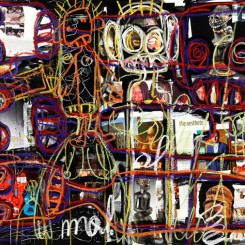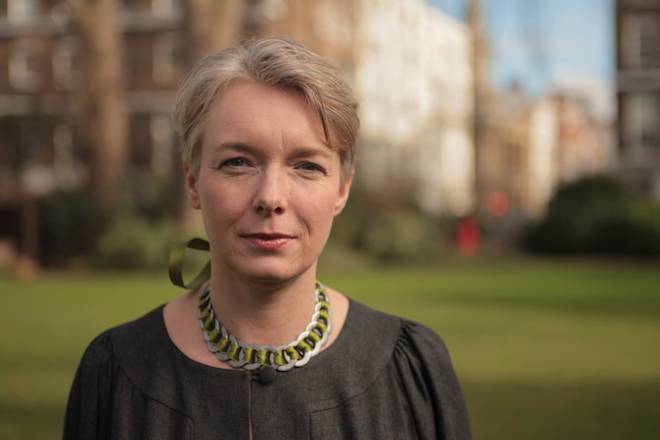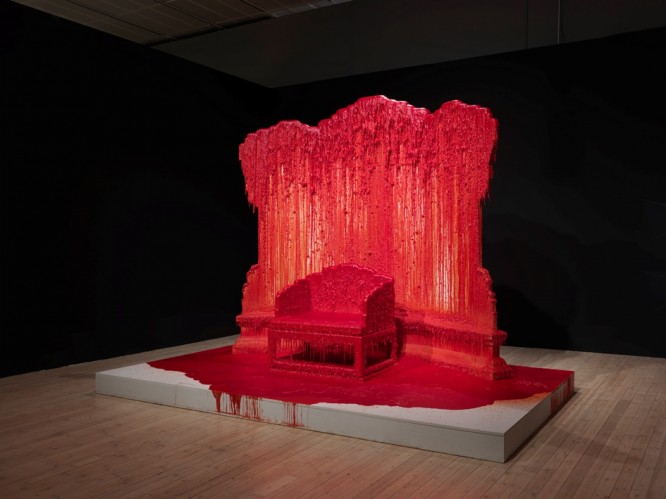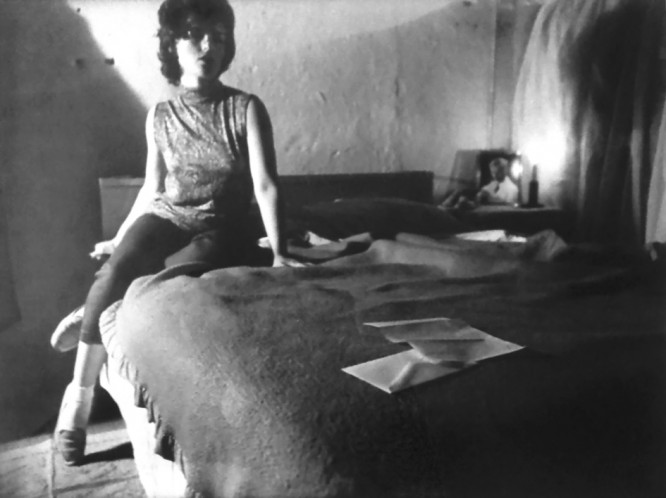Following the success of its inaugural Art13 show, Art14 will opens in London this week. randian 燃点 caught up with fair director, Stephanie Dieckvoss, to talk about London, emerging markets, how she got involved in art in the first place, and the team that launched both Art14 and the Hong Kong art fair (now known as Art Basel Hong Kong).
Chris Moore: How did you get involved in art?
Stephanie Dieckvoss: I first got involved with art when I began studying Art History in Heidelberg and then Hamburg, straight after A-levels. But the more interesting question is how I got involved in contemporary art, because in Germany you studied medieval and renaissance art and you might make it—just!—into the 20th century. At that time [in Germany in the early 1990s] working on contemporary art was not that well regarded. I got in touch with contemporary art for the first time when I discovered the work of the French/American Sculptor Louise Bourgeois. I wanted to write my MA thesis on her and eventually I convinced my professor to allow me to do so and that let do my first job, with Galerie Karsten Greve, Bourgeois’ main representative in Germany back then. I worked for him in Cologne, then Milan, St Moritz, and finally Paris.
CM: Why did you move to London?
SD: Love! But what allowed me to move to London, financially and career-wise, was that when I found my lovely Englishman, the frieze art fair was about to launch, and they needed a fair manager, so I applied for the job and got it.
CM: Do you ever want to leave London?
SD: I’m wondering if you want to print my answer! [laughing] If the UK leaves the EU, I’m seriously considering it! But apart from that I’m very happy here—I’ve lived in London for 10 years now, which is the longest I’ve lived anywhere. I like moving—I consider myself a nomad—but I travel a lot, so that makes it okay living in one place.
CM: The team behind the original Hong Kong Art Fair (now Art Basel Hong Kong) has launched art fairs around the world. What’s the thinking behind this?
SD: After I left frieze, I was running an antiques fair for a year, and I learned a lot there. And then I joined Art Hong Kong for the pre-launch and launch phase. Which was really exciting for me because I’d never done anything outside of the European or Western context.
When Tim [Etchells] and Sandy [Angus] launched the fair, I think for some of them it was their first real engagement with the art world but rather than seeing expansion as a strategy—launching lots of art fairs—I think they just got really passionate about art and understood that this new area they had developed gave them a great knowledge base of networks and interest, which with their event management experience is a really a great combination. And each fair is different. From my perspective, I am only committed to one project, and that is developing Art 14, 15, 16—to become a really important platform for discourse about art and for galleries from all over the world to exhibit in London.
CM: If emerging markets is your focus, why then have an art fair in London? Aren’t there enough art fairs in London already?
SD: I think emerging markets are one of our focuses, but also to create a platform and a discourse between established and emerging markets, and some are more “emerging” or have “emerged” more than others. What I think is important is creating a broader understanding about the art world, that it is becoming a more globalized phenomenon. This is not being discussed as much as it should be. We want to show that there is amazing art being created all over the world—the whole of Asia, the Pacific, China, Japan, much of which we don’t know much about in the West. I don’t think there is any other fair in Europe at the moment where you can see so much art from these territories. And not in isolation but next to their peers from Europe, from America, so you can actually create links between all these different players. There are lots of different fairs that focus on one area—one territory or one continent. But that time is over…the idea that you can pigeon-hole art by geography, as if that were the only identity-giving characteristic, is outdated. One artist in the fair was born in Russia but her cultural background is North Africa. We list in the catalog where people are born but noting that she was born in Russia doesn’t tell us anything about her. So we have to be much more open in understanding diversity.
CM: What makes the London art scene different from anywhere else?
SD: If you don’t start with the “London art scene” but with London itself, I think London is one of the most cosmopolitan cities in Europe. And as a financial center and the fact it is an English-speaking city emphasize its importance as a global hub. In the art scene, there is amazing art being created and shown here and, compared with the other Western art hubs in the twentieth-century, like Paris and New York, London is more connected to the emerging world, such as the Middle East and Asia. Combined with the fact that people come to London for business and culture anyway, and being with New York one of the two leading auction centers, it makes great sense to stage a global art fair here. And the people buying artworks in London are from all over the world.
CM: And what are its weaknesses or its most frustrating aspects?
SD: I’m a mainland European by upbringing and culture. For me one of England’s advantages and disadvantages is that it’s an island—it’s not as closely linked to the rest of Europe. Sometimes despite everything it feels more isolated. Especially in Germany I get this impression, where you can sit in a car and visit Switzerland, Holland or France [among others]. So this daily experience of border crossing doesn’t happen here.
CM: And its weaknesses?
SD: Eternal rain. And it is very much a market place. This is not a criticism but an observation. It is very much ruled by finance. So there is a slightly different mindset regarding culture [than on the continent] and a different history regarding the approach to museums and institutions. And everything is really expensive! Maybe Hong Kong and New York to a certain degree are similar. Cologne is definitely cheaper than London.
What if London breaks away from the European Union, what effect will that have?
SD: Everyone I speak to assure me it’s not going to happen, so I don’t want to even answer that question. And I’m heartened by the fact that large companies and banks have lobbied the government to stay in the Union!
What’s should people look forward to at Art14?
SD: A more global program—there are galleries from 42 countries. And there is greater diversity, with galleries from Australia, China, Singapore, our first gallery from the Lebanon, our first Pakistani gallery, going on through Africa, Central Europe, and Eastern Europe. Last year, some people said [Art13] felt like it was just Europe and Asia—I didn’t! —but this time is definitely more global. So I hope visually people wont have that perception any more.
We also have more galleries at the show presenting modern art, going back to showing the roots of contemporary art from the ‘60s onwards. Delhi Art Gallery will be showing the most amazing modern Indian artists who were so influential for the contemporary art scene in India now and a good number of galleries showing post-war European art and artists from post-war Britain from the 60s and 70s. I hope that people understand that while contemporary art is about the emerging and the cutting-edge, it is also important to take a glance back to its origins.
And we strengthened out curatorial and talks programs, including debates about private museums and does Asia mean with and beyond China. And we have the art in the city initiative about art regeneration. And we have a fun little series of talks about everything you didn’t know about Indonesian, Chinese, Middle-Eastern art.






